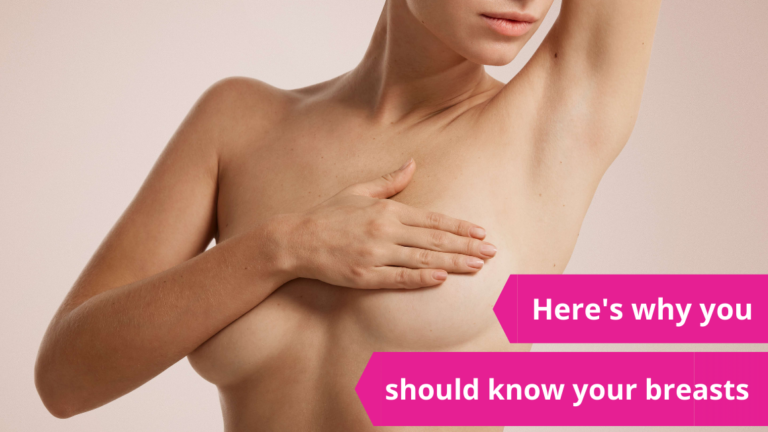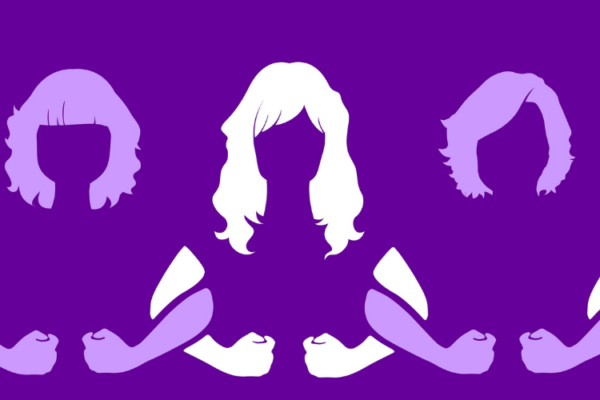Do you know your breasts and check them regularly?
Recently, The Times reported that nearly 12,000 UK women were living with undiagnosed breast cancer during lockdown at the end of May this year.
Research and care charity Breast Cancer Now also states that 47% of UK women fail to check their breasts regularly for potential signs of breast cancer.
- Sex work and health care
- What is breast cancer?
- How common is breast cancer?
- How to check for breast cancer
- Breast cancer symptoms
- Breast lumps
- Is breast cancer painful?
- Breast cancer treatment
- Breast cancer support organisations
- Get breast cancer support today
Meanwhile, a YouGov study revealed that 1 in 10 women have never checked their breasts for any abnormalities, a concerning fact considering the majority of cases are detected by women spotting unusual changes in their breasts.
For Breast Cancer Awareness Month, Vivastreet wants to help raise awareness on the importance of becoming familiar with your breasts and frequently checking them, specifically for sex workers.

Sex work and health care
There have been ongoing debates regarding sex work stigma and discrimination in the health care system.
This often discourages sex workers from seeking advice or care from health professionals as well as following through with treatment to assist health issues.
As well as dealing with this type of stigma, transgender and ethnic minority sex workers also undergo racial and gender discrimination, impeding their access to quality health care even more.
A recent example has seen sex work organisation, NSWP shine light on transgender sex workers misusing hormone therapy without proper medical supervision, putting themselves at risk of serious side effects like breast cancer.
What is breast cancer?
Breast cancer is a type of cancer that is found and starts in the breast tissue. It occurs when cells in the breasts begin to grow uncontrollably.
The cells in the breasts usually form a tumour, which can often be seen on an x-ray or felt as a lump.
Breast cancer can start from different parts of the breasts, which is made up of three parts:
- Lobules: Glands that produce milk
- Ducts: Small tubes that carry milk to the nipple
- Connective tissues: Fibrous and fatty tissues that surround and holds everything in place
The American Cancer Society says that in most cases, the ducts are where breast cancer begins.
It is possible for breast cancer to spread outside the breast and other parts of the body.
Women mainly get breast cancer, although in rare cases, men can get it too.
How common is breast cancer?
In the UK, breast cancer is the most common form of cancer. It’s also the most common type of cancer in women.
According to Breast Cancer Now 2021 statistics, approximately 55,000 women and 370 men are diagnosed with breast cancer every year. Also, 1 in 7 women will develop breast cancer in their lifetime.
Although younger women can get breast cancer, most women who are diagnosed are over the age of 50, making up 8 out of 10 cases.
It’s important for women of all ages to check their breasts regularly for any changes and have them examined by their GP.

How to check for breast cancer
Along with other breast screening methods, breast self-exams are important for helping early detection of breast cancer, potentially increasing chances of survival.
According to Johns Hopkins Medicine, “Forty percent of diagnosed breast cancers are detected by women who feel a lump, so establishing a regular breast self-exam is very important.”
It should be a part of your breast screening strategy and is a convenient and free health check that should be performed regularly.
Many breast cancer organisations are in agreement with the National Breast Cancer Foundation’s recommendations that you check your breasts at least once a month.
Although there’s no right or wrong way to check your breasts, here’s some guidance on how to do a breast self-exam 5 easy steps:
- In the mirror, visually examine your breasts with your shoulders straight and arms by your side to see if you can spot any changes, such as a difference in your breast shape (more information on breast changes can be found below).
- After, raise your arms and repeat Step 1. Also, look to see if you can see any fluids oozing from your breasts (e.g., watery, bloody, etc.).
- Next, repeat Step 1 with your hands on your hips.
- Now, while standing or sitting, use the tops of your first few fingers to press down on your breasts while keeping your fingers flat and together (you can do this with massage oil or shower gel). Use light but firm pressure while incorporating up-and-down and small circular motions. You should use the right hand to feel your left breast and vice versa. Make sure you cover all areas of your breast – from your collarbone to the top of your abdomen and from your armpit to your cleavage. Many women find this easier when doing this in the shower while their skin is wet and slippery.
- Finally, lay down on your back and feel your breasts, repeating movements described in Step 4.

Breast changes
Breast changes are changes in how your breasts or nipples look or feel to the norm.
For a better understanding of breast changes, it’s important to understand what breasts and the lymphatic system are made of. You can find more information about this from the National Cancer Institute.
Breast cancer symptoms
According to the NHS and other breast cancer organisations, here are the most common breast cancer symptoms and breast changes to look out for:
- A change in the size, outline or shape of your breasts
- A new lump, swelling, thick, or bumpy area in or near your breast or underarm
- A change in the look or feel of the skin on your breasts, such as puckers, dimples, redness, scaling, itching or rash
- A fluid or discharge from your nipple that is not breast milk
- A change in the position of your nipples, such as pointing inward or in a different direction
- Any discomfort or pain in your breast, particularly if it’s new pain and does not go away (more information on pain can be found below)
Please note that the above symptoms do not mean you have breast cancer, but can be a sign.
If you find something abnormal with your breasts or you are concerned, get it checked out by your GP as soon as possible.
This is considered best practice to rule it out for your mental wellbeing, and if breast cancer is detected, to get treatment as soon as possible.
Breast lumps
If you find a lump in your breast, try not to panic. Most women have lumpy areas in their breasts and most lumps are harmless, although some can be serious.
Breast cancer lumps can vary in size and should be 1cm in size before you can feel them.
There are many causes for lumps in breasts that are non-cancerous, with the most common being:
- Fibroadenoma – a lump that often develops during puberty, but which can occur at any age
- Breast cyst – a sac build-up of fluid that tends to develop as the breasts change with age. This is more common in pre-menopausal women
You can find more information on the causes of breast lumps here.
Cancerous breast lumps have been described as often feeling rigid with angular edges and do not move around in the breast when you feel it.
If there are other symptoms (mentioned above) along with having a breast lump, get it checked out by your GP as soon as possible.
Beware that not all breast cancer forms lumps, so it’s important to check for other symptoms.
You should also contact your GP if you find a lump in your breast that is abnormal or you are generally concerned.

Causes of breast cancer
Like most types of cancer, breast cancer occurs when DNA is damaged and replicated from one cell to another.
It’s tricky to pinpoint exactly what causes breast cancer, but there are risk factors that contribute to the development of the disease, which you can help prevent.
Here are some things that can increase your risk of breast cancer below:
- Not exercising regularly or having a sedentary lifestyle
- Bad eating habits, such as consuming a diet with too many saturated fats and not enough vegetables
- Excessive alcohol consumption
- Undergoing frequent radiation therapy, especially under 30 years of age
- Taking combined Hormone Replacement Therapy (HRT), which can also increase the risk of breast cancer taking longer to be detected
According to the National Breast Cancer Foundation, between 60% and 70% of people who develop breast cancer have none of these risk factors, while people with them may never have the disease. In other words, even if you take all possible actions to prevent developing breast cancer, there are some factors that can’t be controlled, such as:
- Gender: The majority of people who are affected by breast cancer are women. However, it’s possible for men to develop the disease
- Age: Approximately 80% of breast cancer cases occur in women over 50. But it can occur in younger women as well
- Race: Breast cancer is more often diagnosed in Caucasian women
- Genetic factors: People who have had cases of breast cancer in their immediate family have a higher risk of developing the disease. If you have a history of breast cancer in your family, you can take a genetic test to identify mutations in the genes BRCA1 and BRCA2 which are related to breast cancer
- Personal health history: Those who have had cancer in one breast previously indicates a higher risk of developing the disease again in the other breast. Additionally, having had your menstruation before the age of 12, entering menopause after the age of 55, never having kids or having kids at an older age also increases the risk
- Dense breast tissue: This condition makes lumps harder to detect, but also increases your risk. Ask your doctor to check for this condition during a mammogram
- Obesity: Although obesity is not a sign of an unhealthy lifestyle, it can increase your risk for breast cancer. For women who have gone through menopause and are obese, the risk is even higher
This is why it’s important to check your breasts regularly and stay alert to symptoms of breast cancer.
Is breast cancer painful?
The National Breast Cancer Foundation says that breast pain is not commonly a symptom or sign of breast cancer.
Any discomfort, pain or tenderness in the brass or underarm can occur for various reasons.
However, it is possible for breast cancer to cause changes in skin cells that can lead to feelings of tenderness and pain, although it is rare.
Breast cancer treatment
If you have breast cancer, there are various treatment methods you can try to help regain your health.
As explained on the NHS site, the main treatments for breast cancer are:
- Surgery
- Radiotherapy
- Chemotherapy
- Hormone therapy
- Targeted therapy
The type of treatment you will have depends on various factors, such as the stage and grade of breast cancer, your general health, and whether you’ve experienced menopause.
You may also have one of these above treatments or a combination.

Breast cancer support organisations
As well as your GP, there are plenty of organisations you can go to for guidance and support regarding concerns about your breasts.
Whether it be online support our research resources, below are some breast cancer organisations you can seek help from:
- Macmillan Cancer Support
- Breast Cancer Now
- Cancer Research UK
- Breast Cancer UK
- Breast Cancer Haven
- Pink Ribbon Foundation
- Keeping Abreast
Get breast cancer support today
As breast cancer is common in women, remember to regularly perform breast self-examinations, as advised by medical practitioners, to help detect it early should you have it.
With plenty of information online, we recommend reading about breast cancer to help better understand the disease and get guidance on how to spot the signs and what to do if you notice any abnormalities.
If you have any concerns about your breasts, get in contact with your GP as soon as possible.





